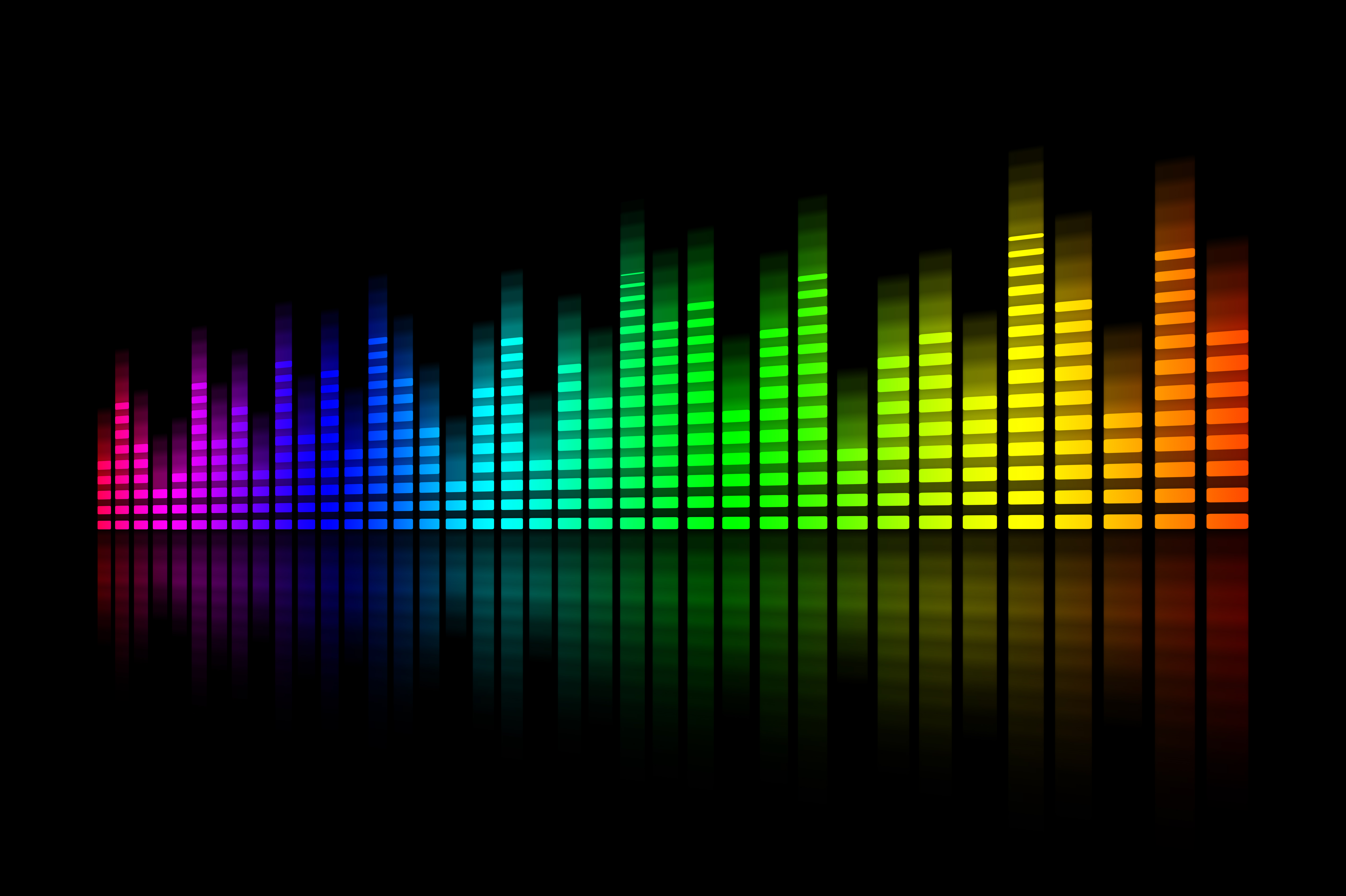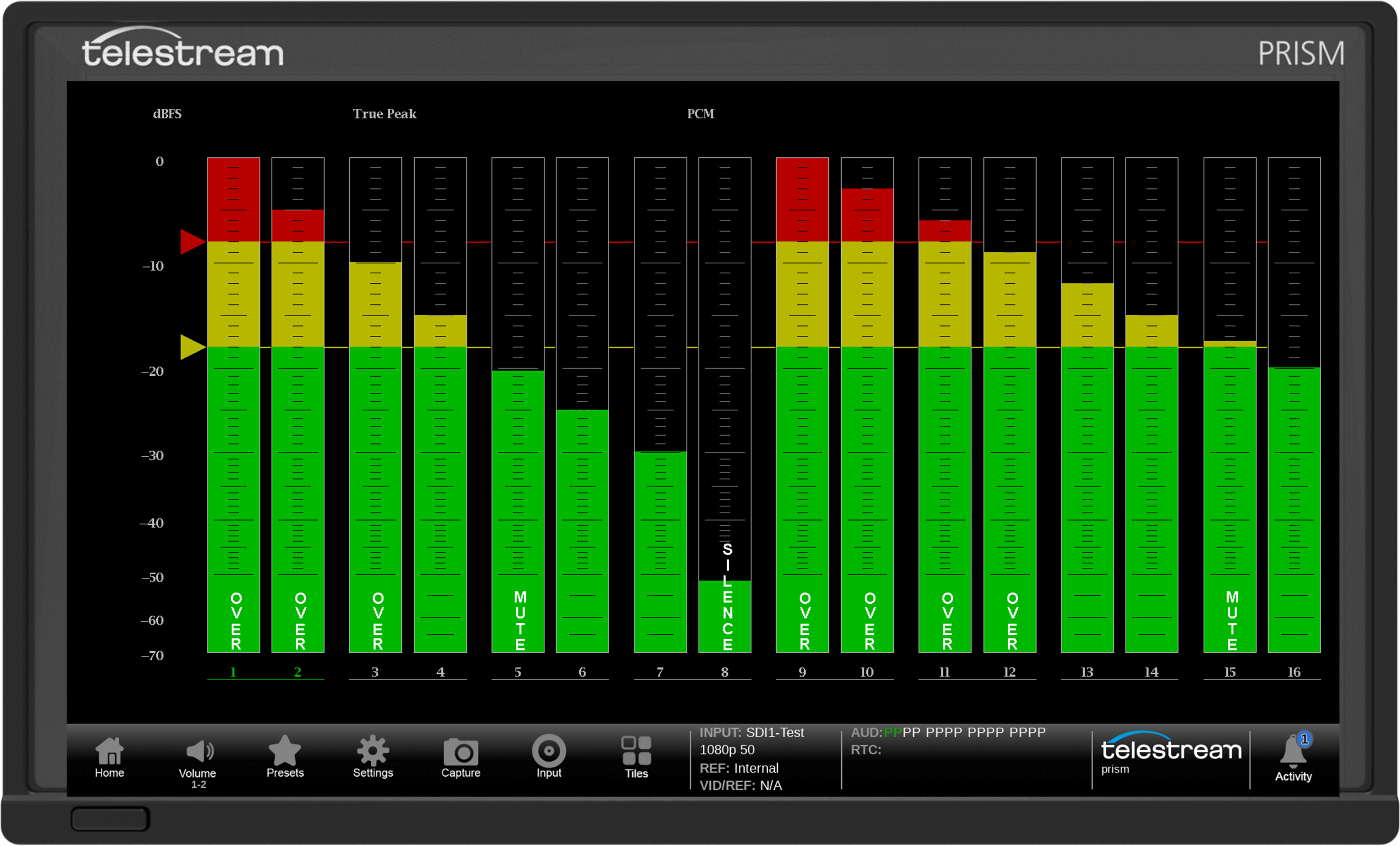
Audio monitoring has, as would be expected, changed dramatically since the days of mono sound and peak program and volume unit meters (PPM/VU), but development is now continuing at a rapid rate. Manufacturers have responded to how the broadcast market has broadened, with streaming and distribution to multiple platforms and devices bringing a whole new set of parameters to be monitored.
These include the various forms of multichannel audio—surround or, increasingly, immersive sound being the most obvious forms but with alternative languages and commentaries plus audio description now ever more important—along with audio over IP (AoIP) formats.
Monitoring Interactions
The evolution of monitoring equipment from the days when basic faults were the main target to today’s much broader and involved requirements are summed up by Don Kianian, solutions marketing manager at Telestream.
“Historically, the traditional requirements for audio monitors have involved monitoring the audio level, comparing the phase between channels, and looking for errors such as clipping, overdubbing, mutes and the like,” he says. “However, additional demands are emerging. The increase in the prevalence of multichannel audio—such as 5.1 and 7.1, immersive audio like 5.1.4 or 7.1.4 and multilanguage tracks—means that it is no longer enough just to monitor the stereo signal; monitoring the interactions between all channels is just as, if not more, important.”
As a consequence, Kianian explains, modern techniques are necessary to replace the venerable Lissajous curve displays on oscilloscopes.

“New tools are needed to help simplify and visualize the interaction of multichannel audio, like using surround sound displays that can assist in mastering the mix,” he says. “As more multiformat systems and workflows are used across the broadcasting industry, there is a growing need for audio monitors to accommodate new systems and formats. For example, our PRISM waveform display can support both SDI embedded and IP audio monitoring, while the Inspect2110 provides audio level and loudness monitoring across multiple streams in an IP network.”
Controlling Loudness
Loudness continues to be a critical area that needs to be checked and controlled, particularly with the risk of fines if broadcasters do not conform to standards such as ITU BS 1770, ATSC A/85 or EBU R128. Makarand Karanjkar, CEO/CTO of Wohler, describes audio monitoring of all signals and streams as “a critical function” in broadcasting today.
“From a signal perspective, customers are looking to monitor IP-based audio formats like Dante and RAVENNA, plus signals in the AES67 interoperability standard, as well as SMPTE ST 2110 and ST 2022-6/7 for video, over and above existing baseband signals like SDI, AES, MADI and analog,” Karanjkar said.
While AoIP would appear to be in the ascendancy, Wohler acknowledged the continuing need for baseband monitoring in July with the launch of three new hardware units (the eight-channel eAMP1-S8-MDA, 16-channel eAMP1-S16-MDA and eight-channel analog/AES-only eAMP1-S8-DA).

Even so, Karanjkar agrees that the software monitoring of more elaborate formats is now a priority for many users.
“In terms of software functions, customers are looking for features like loudness, easy configurability for IP monitoring and overall ease of use,” he says. “Given the perpetual evolution in requirements, customers value the ability to upgrade functionality over time via software updates. More sophisticated immersive sound formats like Dolby Atmos and MPEG-H are continuing to enter the mainstream and impose their own monitoring requirements.”
Hardware Still Matters
The introduction of immersive audio formats, such as Dolby Atmos and MPEG-H 3D Audio, for broadcast and streaming has, as Freddy Vinehill-Cliffe, audio product specialist at NUGEN Audio, observes, increased the need to monitor multiple feeds.
“Our users need to be able to monitor a wide variety of channel counts, not just stereo,” he says. “That could mean checking phase relationships, ensuring a mix translates on various formats or something else. Another major concern at the moment is dialog intelligibility; audio mixers need tools that not only measure program loudness but also specifically dialog loudness and dialog LRA [loudness range].”

Like other audio monitoring system developers, NUGEN is offering more capability in software-only systems but, again like others in the market, is not moving away from dedicated physical units just yet.
“There is no denying the convenience of software,” comments Vinehill-Cliffe. “Developments like the ReMEM history function in our VisLM software speed up the day-to-day workflows. However, there is certainly something to be said for the robustness and reliability of hardware, too. For example, a hardware meter won’t suddenly become incompatible with the rest of your set-up due to an operating system update.”
At TSL Products, audio product manager Steve Cole concurs that there is “still a significant place” for standalone hardware in broadcast right now. “It handles a wide variety of input sources, provides dedicated monitoring capabilities, tactile controls, and reliable performance without relying on the resources of a general-purpose computer or network infrastructure,” he said.
But there is also a growing trend towards software-based solutions and the integration of audio monitoring functionalities within other applications, according to Cole.
“Many broadcasters are also looking to develop hybrid environments where their hardware can link seamlessly with all the other hardware and software they use or might need to use in the future,” he said.
The Impact of Remote Production
The last decade has seen an increase in not only networked systems—both within a broadcast center or between different facilities, either in the same area or at more distant locations. As Cole observes, remote production and, as a consequence of the pandemic, remote working, now mean audio monitoring systems need to offer new features to cope with sources from many different places.
“We have responded to these demands by incorporating ST 2110 and ST 2022 IP media support, remote access for unit configuration and control, support for remote monitoring via LiveView web page and integration with control solutions for remote production workflows into our MPA1 range,” he says. “These features enable broadcasters to monitor audio signals from anywhere, collaborate remotely and streamline their operations in the evolving broadcast landscape.”
As broadcasting continues to evolve, audio looks set to become an even more important and complex part of the overall set-up. Which means that audio monitoring systems, whether hardware or software, will play an ever more crucial role in ensuring not only good sound quality but also that all the different elements are in place for multichannel services.







